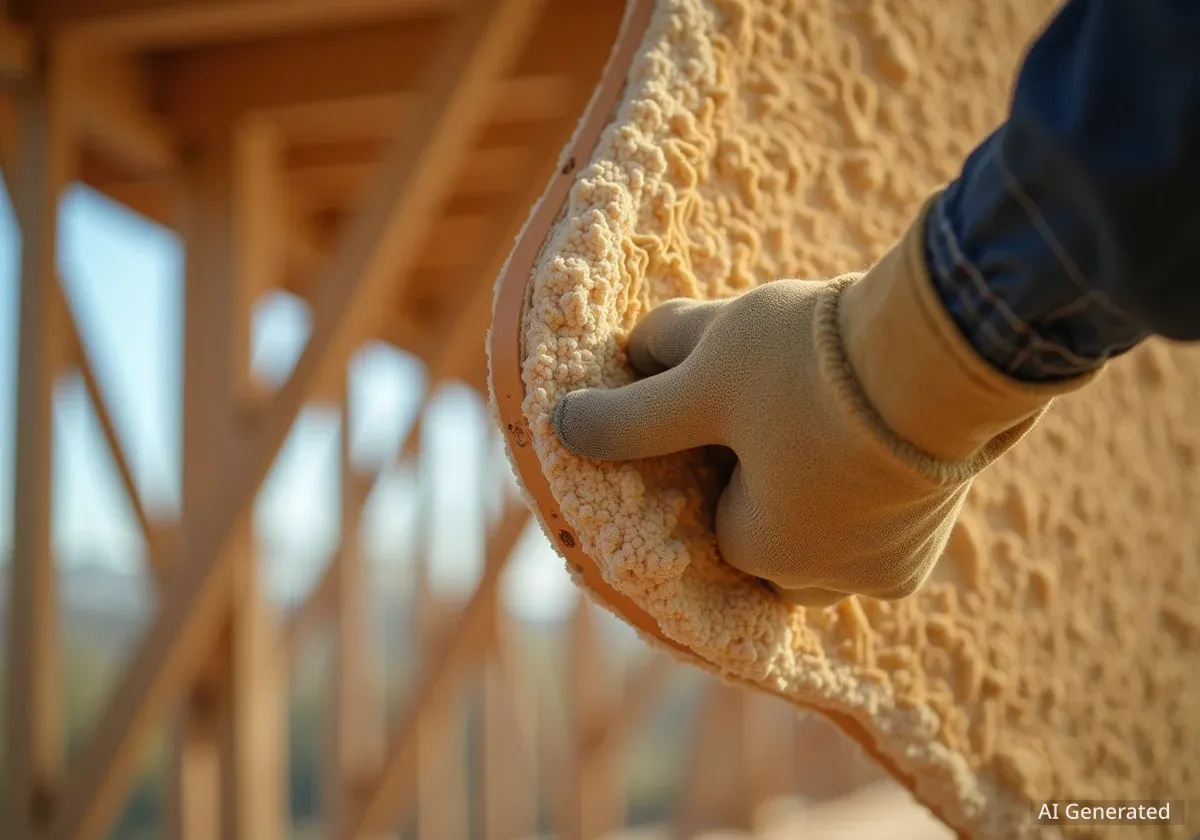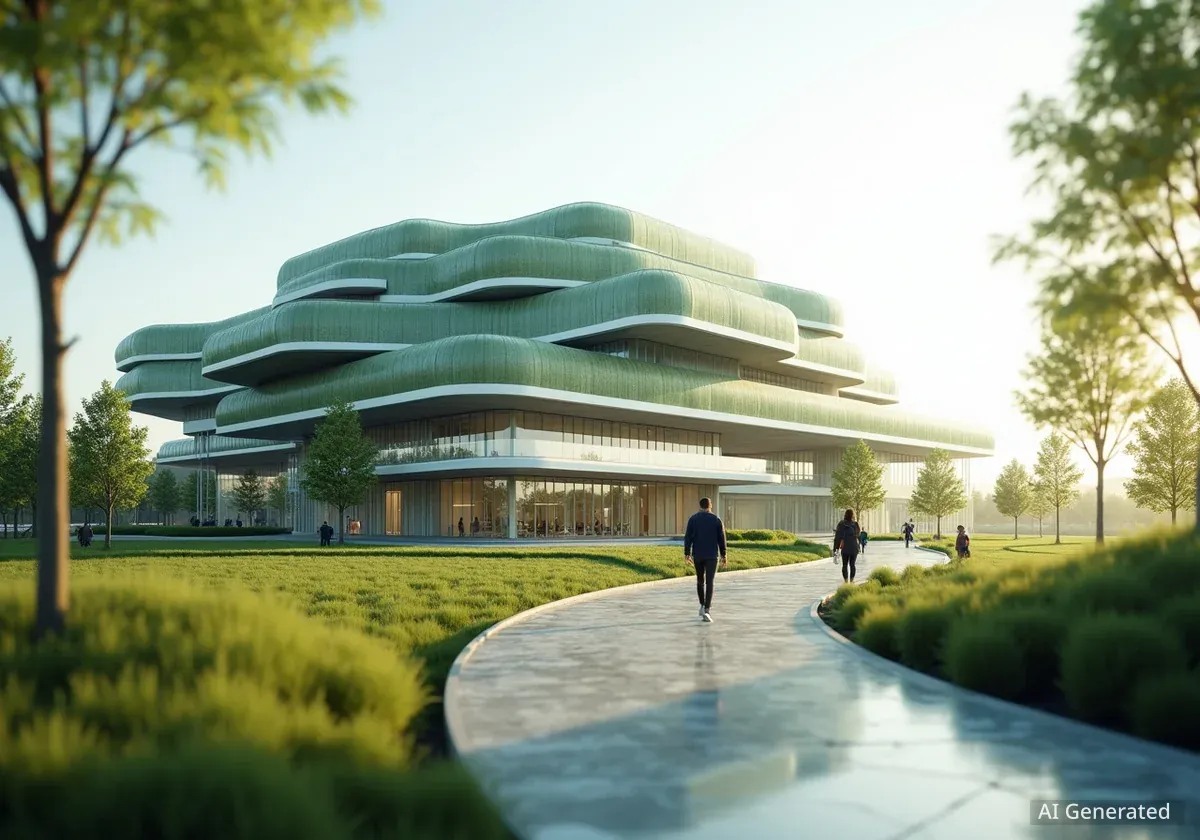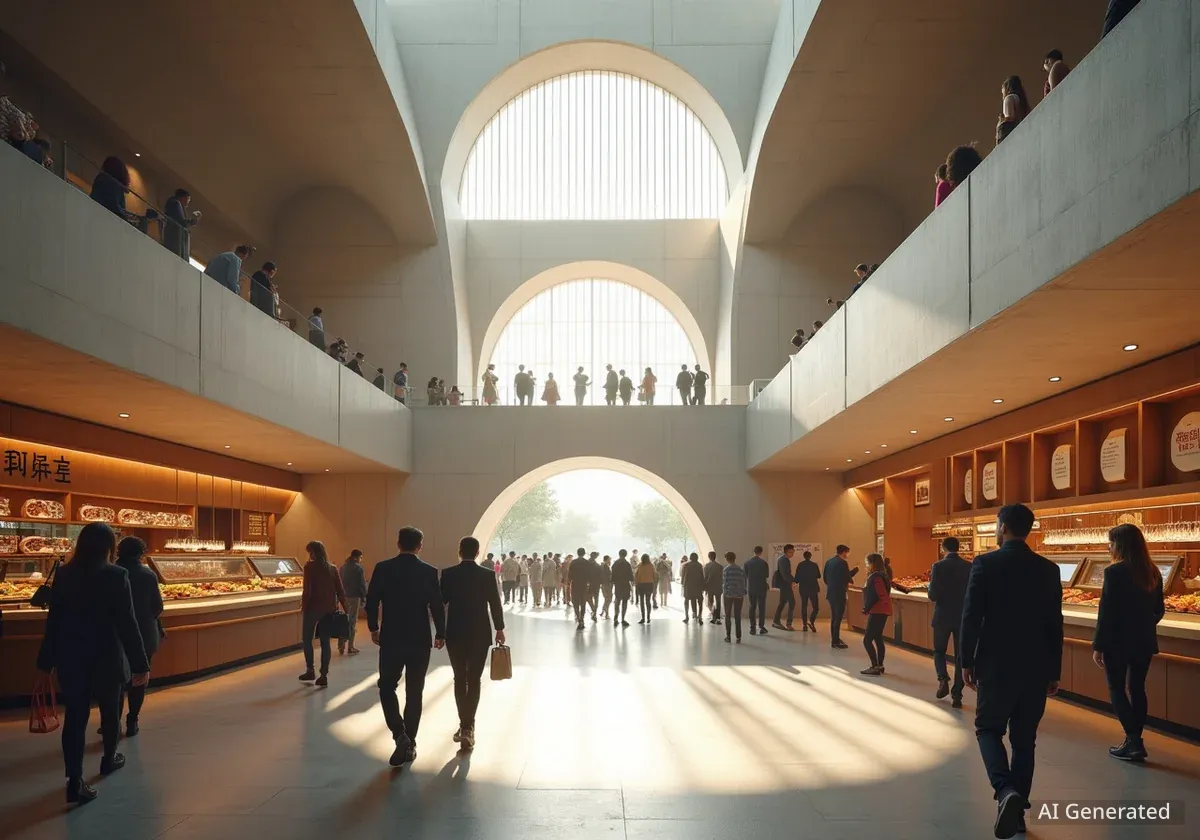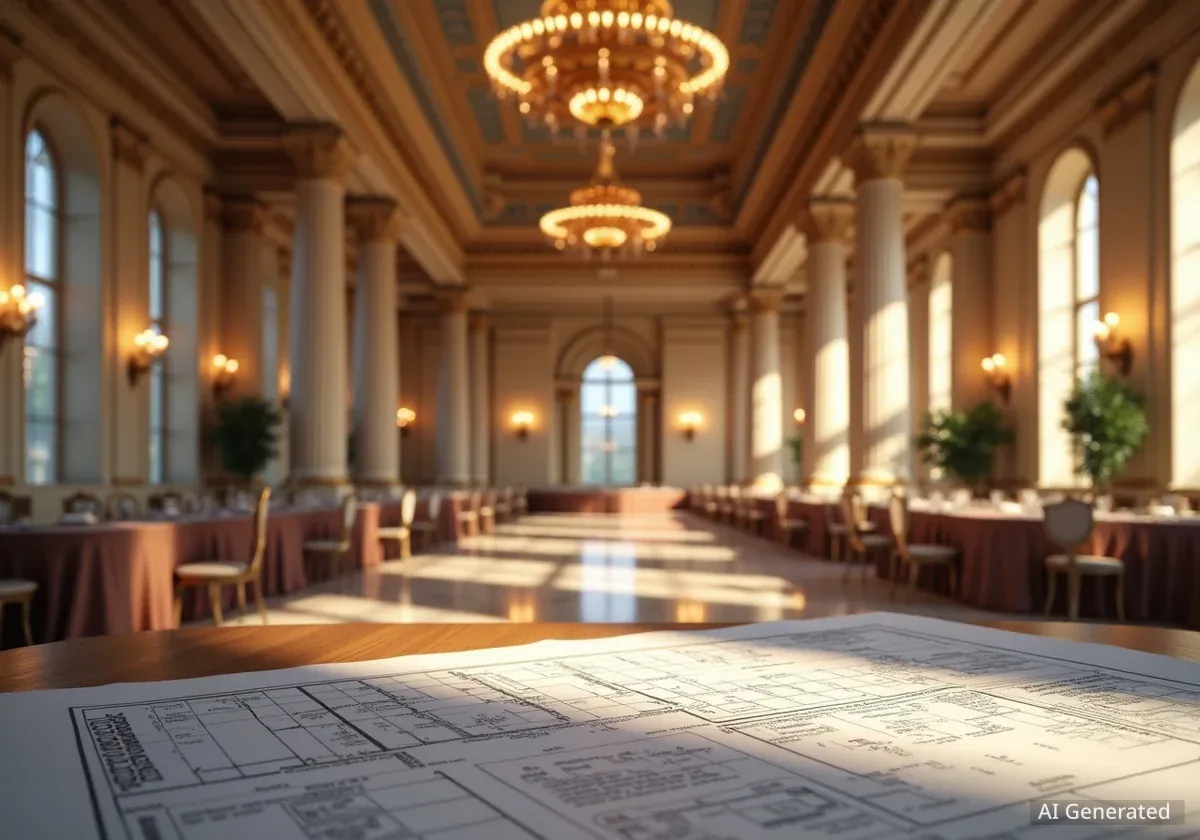A new experimental timber pavilion in Tallinn, Estonia, showcases innovative insulation panels made from mycelium. Developed by materials company Myceen and the Estonian Academy of Arts (EKA), the PAKK Pavilion serves as a testing ground for these sustainable biomaterials, aiming to offer an eco-friendly alternative to traditional insulation like mineral wool or expanded polystyrene.
The structure, an angular timber building, integrates a modular construction system and a unique facade design. It highlights the growing potential of fungal root systems in modern construction. This project marks Myceen's first application of mycelium as a building product, following its previous use in smaller design items like lampshades.
Key Takeaways
- PAKK Pavilion uses mycelium-based insulation panels.
- The project is a collaboration between Myceen and the Estonian Academy of Arts.
- Mycelium offers a sustainable alternative to traditional insulation materials.
- The pavilion tests thermal performance and mold resistance of the new panels.
- Early results show positive moisture management and thermal resistance.
Developing Sustainable Insulation from Mycelium
Myceen’s insulation panels, known as mycocomposite, use the natural growth of mycelium to bind industrial waste products. These residues include sawdust and wood pulp. After the binding process, a specialized drying method stops the mycelium's growth, creating stable and effective insulation.
This approach transforms waste materials into valuable building components. It reduces the need for new resources and minimizes environmental impact. The company believes there is a clear market demand for such sustainable solutions.
"Talking with architects, builders and prefab house producers around Europe has given us confidence that the material is needed in the market," said Siim Karro, CEO and co-founder of Myceen.
The aim is to provide a greener option for insulation, reducing the carbon footprint of buildings. Traditional insulation materials often require significant energy to produce and can have disposal challenges.
Fact: What is Mycelium?
Mycelium is the vegetative part of a fungus, consisting of a network of fine white filaments called hyphae. It typically grows underground or within a substrate, forming the 'roots' of mushrooms. Its natural binding properties make it suitable for creating biomaterials.
Modular Construction and Innovative Facade Design
The construction of the PAKK Pavilion was led by EKA PAKK, the timber research center at the Estonian Academy of Arts. Their work integrated findings from two ongoing research projects: Pattern Building and sLender.
Pattern Building is an open-source, modular timber construction system. It is designed for easy assembly, disassembly, modification, and expansion. This flexibility allows structures to adapt to changing needs, promoting longevity and reducing waste.
The pavilion's cubic frame was built using ash dieback timber. This choice utilizes wood affected by a common tree disease, turning a potential waste product into a structural component. The frame was then clad with timber planks, providing a robust exterior.
The sLender Facade System
The sLender facade system gives the PAKK Pavilion its distinctive angular appearance. This system was developed to address the issue of "homogenization" in the refurbishment of Estonia's older housing stock. Many older buildings are renovated in a uniform way, losing their unique character.
The sLender system features lozenge-shaped, modular timber sections. These are designed to over-clad existing structures, providing multiple benefits. They improve insulation, add balconies, and can even integrate elevator and stair modules.
Context: Estonia's Housing Stock
Estonia, like many European countries, has a significant number of aging residential buildings. Renovating these structures often involves modernizing them, but without careful design, it can lead to a loss of architectural diversity and cultural heritage. The sLender system aims to offer a solution that is both functional and aesthetically distinct.
In the PAKK Pavilion, these modular sections wrap around a front terrace and a straight staircase. This staircase leads up to a roof terrace, creating a multi-level outdoor space. The integration of these elements demonstrates the system's versatility and potential for urban renewal projects.
Performance Testing and Future Potential
The Myceen mycocomposite insulation panels within the pavilion will undergo extensive testing until the end of 2026. Researchers will monitor their thermal performance and assess any risk of mold development. This long-term study is crucial for validating the material's effectiveness and durability in real-world conditions.
Initial findings are very promising. According to Myceen's head of science, Killu Leet, the panels show excellent moisture management. This is critical for preventing condensation and mold, which can compromise insulation and structural integrity.
"Preliminary results reveal no condensation or mould risks, demonstrating excellent moisture management for our biocomposites," said Killu Leet. "Furthermore, measured U-values indicate superior thermal resistance compared to mineral wool under the same conditions."
The U-value is a measure of how well a building element insulates. A lower U-value indicates better thermal performance. The reported superior thermal resistance suggests that mycelium panels could offer significant energy savings for buildings.
Key Performance Indicators
- Thermal Performance: Measured by U-value, indicating heat transfer.
- Moisture Management: Ability to resist condensation and prevent mold growth.
- Durability: Long-term resistance to environmental factors.
Broader Applications of Mycelium in Architecture
The use of mycelium in construction is gaining traction globally. Several other projects have explored its potential beyond traditional insulation.
- A pavilion in London, designed by Studio Weave, Tom Massey, and Sebastian Cox, used mycelium to bind agricultural waste into textured facade panels. This shows its potential for creating varied surface aesthetics.
- Glastonbury Festival featured a stage insulated with mycelium, demonstrating its application in temporary or event structures.
- A restaurant in Ukraine incorporated mycelium as curtains, highlighting its versatility in interior design elements.
These diverse applications underscore mycelium's potential as a versatile, sustainable biomaterial in architecture and design. As research continues and production methods evolve, mycelium-based products are likely to become more common in the construction industry, contributing to more environmentally friendly building practices.
The PAKK Pavilion project represents a significant step forward in bringing these materials from experimental stages to practical, tested applications, paving the way for wider adoption in sustainable building.





